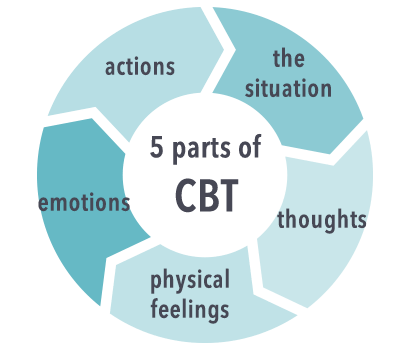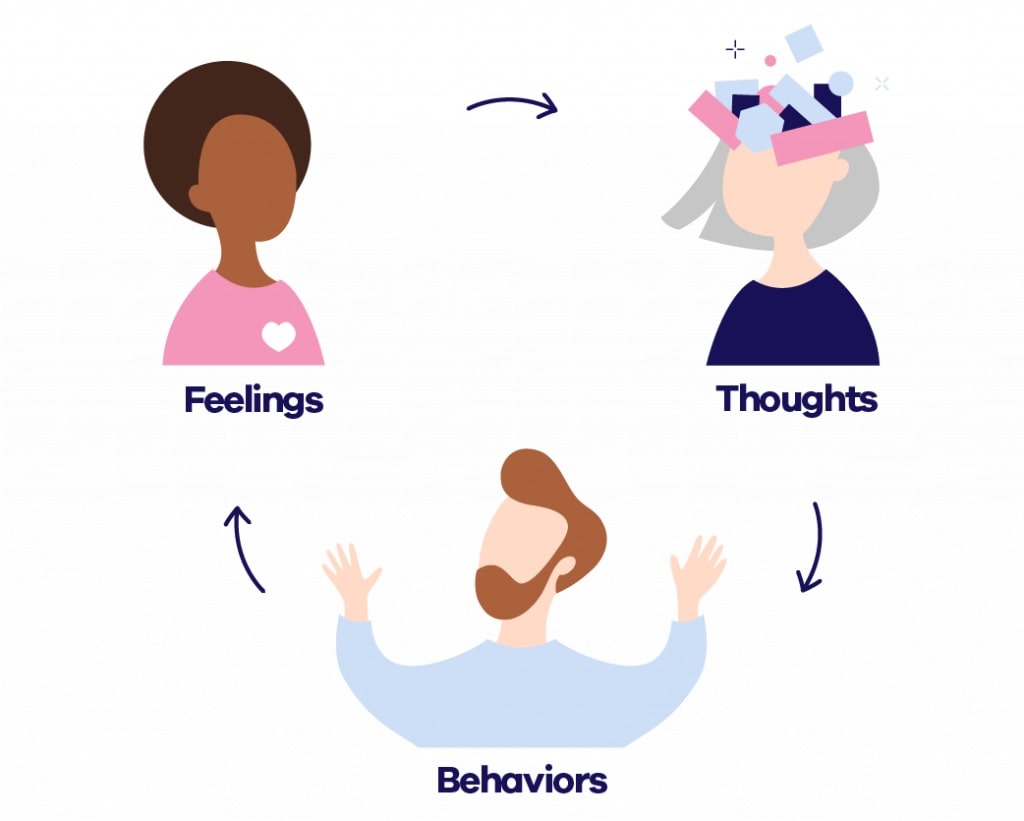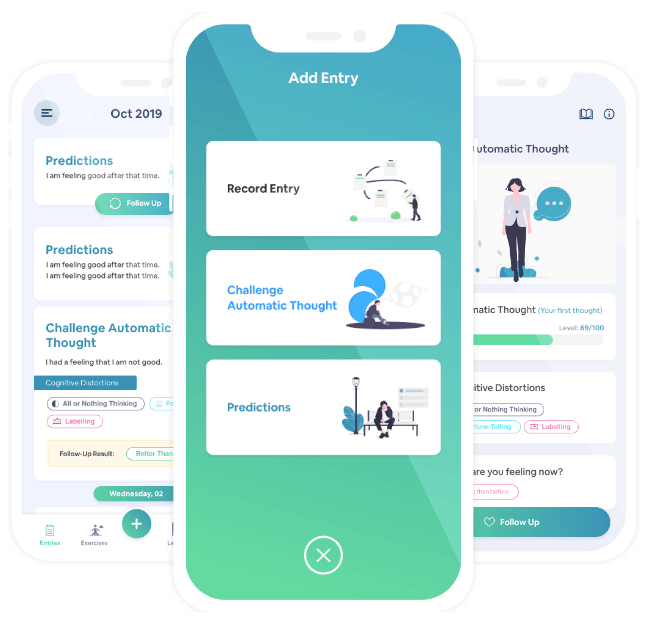Cognitive Behavior Therapy, as the name suggests; is a therapy (or treatment), which is behavior-related and is purely cognitive (i.e. related to knowledge). Now, this knowledge could be based on the practical world or the existing facts or some illusions (or self-created misconceptions). Hence, CBT (Cognitive Behavior Therapy) can be explained as a treatment given to someone, whose thought pattern gets altered due to improper (or lack of) knowledge.
Unlike other ongoing long treatments, CBT is a short - term treatment procedure that targets the patient’s thought procedure, what he believes is right or a fact, his feelings about himself and others around him; which ultimately is reflected through his behavior and attitude.
Cognitive Behavior Therapy is an efficient tool in treating various mental and physical disorders, such as anxiety, stress, insomnia, social anxiety disorder, PTSD, OCD, problems due to intake of alcohol and drugs, sexual disorders, dental phobia, etc.
Principles areas of working in Cognitive Behavior Therapy are:
- Malfunctioning of thought process.
- Inappropriate behavior and attitude.
- Acquiring self-healing capability against their mental illness.
In this case, the problems are encountered by the people due to their habit of taking or thinking for a thing or the event as they want, but not as the event actually is. Affected by this habit (rather a problem), the person starts losing his confidence to handle any situation. And unfortunately, behaves abruptly in a mischievous manner.

How Does CBT Work?
Cognitive behavior therapy is targeted towards healing and rectifying the thought process and help people find new ways to behave. During a course of CBT, a person can learn to:
-
Spotting Out The Problem Or The Troubling Cause
The very first step is to identify the actual problem clearly. The though process that has landed them here.
-
Scrolling Out The Cause
The therapist now starts finding out the reason behind the distortion in the thought process of the patient. He does it by talking to him, asking him to share every bit of his thoughts, and counseling him for the same thereafter. This discussion can be one to one or group discussion (as per the requirement).
-
Self -Realization By The Patient And Calming
The psychotherapist proceeds with the patient with role-playing activities, giving him some homework, making the patient realize himself about his irrational thoughts and unhelpful behavior. This helps calm down the aggressive behavior of the patient.
-
Re-Shaping The Thoughts of The Patient
In order to re-create confidence in the patient; he is exposed to his fears, asked to perform the activities that he was scared of (that were his confidence killer). Also, the entire thought process and the attitude of the patient is re-shaped. He is made to realize what the conditions actually are.
CBT For Anxiety
If you are stressed, you will be anxious; hence leading to anxiety. It is a natural body response, towards anything strange that you are doing, or doing it for the first time. For Example, attending your first interview, relocating at a new place, delivering a speech, etc. Such a feeling prevails as long as you face it. But if it is always there with you, disturbing you every moment, losing your confidence and affecting your normal character; then it is an alarm to consult your doctor or a therapist.
The best therapy suggested to deal with your anxiety would probably be CBT (Cognitive Behavior Therapy). CBT for anxiety helps to change your thought pattern in a way that, even if triggered the situation would not go worse. Cognitive Behavior Therapy for anxiety involves the following steps:

-
Ruling Out The Thought That Triggers The Patient
While giving CBT for anxiety to the patient, the main motive of the therapist is to identify or to rule out that particular thought, which makes the patient anxious. It may be boarding a plane, thought of losing someone, or any other. If the therapist is able to spot out this trigger, he is very well in a condition to shoot the problem out of the brain.
Let us take an example here, that the patient is hesitant in attending the parties. The anxiety of facing a crowd with the fear of being judged by the people can further be classified as a social anxiety disorder. Let us continue, taking an example of cognitive behavior therapy for social anxiety disorder.
-
Questioning The Triggering Thought
The therapist talks and questions the patient to rule out the root cause of the anxiety for any situation like social anxiety disorder. If the patient avoids going to parties or gatherings because these make him anxious. Now, the therapist would try to find out the main cause behind it, as where it originated from. In order to resolve the fear, the therapist himself would take the patient to the party, stand along with him, giving him cognitive behavior therapy for social anxiety disorder.
-
Re-Framing A New Thought Process
After the root cause is known to the doctor, he would repeatedly keep giving CBT for Anxiety to the patient. In this case, it will make the patient face public more often. This in turn will help the patient to realize that what his thoughts were baseless and it will help him reframing a fresh and healthy thought structure and come out of his fear.
Take-Away Message
Cognitive behavioral therapy has been proven the most successful therapy to cure people, who make their own world, based upon unhelpful thoughts, which are nowhere close to the truth or reality. The patient then starts dwelling the same in his mind, taking them to be right; which in turn are reflected by his behavior and attitude, tending to eradicate his feelings. And no or lack of feelings further leads to the development of distorted thoughts. This is a cyclic process and keeps multiplying.

With the advancement of technology, there is an application for almost everything. A featureful, and user-friendly CBT therapy app under the guidance of experts can help you a lot.
Lastly, it is you, who has to think about the authenticity of this and take an initiative for this. Very well said by Roy T. Bennett:
“Don't be pushed around by the fears in your mind. Be led by the dreams in your heart.”


